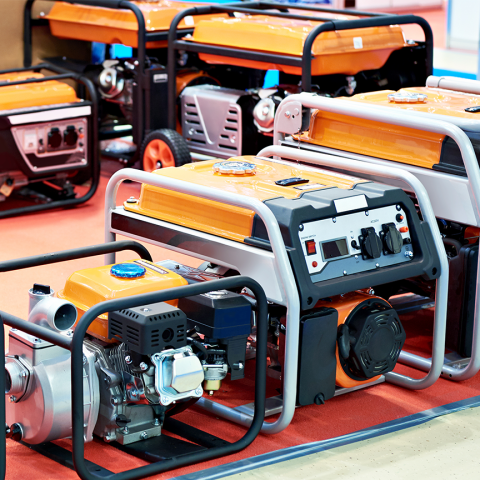Livestock Systems
Livestock Systems
Livestock systems are more than just raising animals, they’re a key part of producing food, managing natural resources, and caring for animal well-being. In Biosystems and Agricultural Engineering Extension, experts look at how to design and improve these systems using technology and science. This includes things like building better barns, creating efficient feeding and waste systems, using automation to monitor animal health, and finding ways to reduce the environmental impact of farming.

Have You Herd? Podcast
This podcast offers insights from weekly updates on farm life, innovation, and sustainability. Whether you're curious about modern agriculture or passionate about practical engineering in action, these archived episodes have plenty to offer.
Listen on PodBean
Roof Rainfall Calculator
This spreadsheet will help you calculate rainwater flowing off a roof. You will need to figure out the square footage of the building on each side of the roof, count how many downspouts are on each side, and determine an expected 1-hour rainfall event for your location.
Download Spreadsheet
Pricing and Building a Cattle Working / Handling Facility
This spreadsheet is meant to be used in conjunction with our publication AEN-145: Designing or Reworking Your Cattle-handling Facilities: A Checklist for Success.
Download Spreadsheet
Sizing Generators
Electric power usually comes from a service panel sized to run most equipment at once. But when sizing a generator, it's more cost-effective to prioritize which equipment must run at the same time. The two load calculators* below estimate the total power needed for typical farm and household equipment.
Download Spreadsheet*How to Use the Load Calculators
- Identify all the equipment that will need to be on at the same time. For instance, if in your home, you may want to run a stove, refrigerator, lights and a hot water heater all at the same time, or you may want to switch between loads during the day.
- The first column in each spreadsheet describes a specific appliance or piece of equipment; the second column includes drop-down options of "On," "Off" and in some cases "Start" (on the farm equipment spreadsheet). Be sure all equipment is listed as "Off" to start the load analysis. Select "On" for each piece of equipment identified in step one.
- For the farm equipment spreadsheet, often a system will be designed with multiple motors of the same size. The third column will allow you to identify how many motors of a specific size are needed on your farm in an emergency situation. For example, if you have four fans each with a 1/2 horsepower motor you would edit the value in the "Number of Units" column from 1 to 4.
- The column labeled “Load” provides actual loads required to run specific equipment. The last column "Typical Load" gives an expected range. While an approximate value is given, you should enter "Load" values that match the specifications for your specific equipment if possible.
- Both spreadsheets have the ability to add a load not included in the spreadsheet for equipment specifically needed for your operation. However, no typical load or given value is included for these rows in the spreadsheet. Use values provided on the equipment nameplate.
- Starting a motor will pull more power than operating it under normal loads. When sizing a generator for farm equipment, determine which motors will turn on simultaneously. Switch any combination or large single motors you've identified to “Start” in the drop-down list to determine the maximum power required for the system. Look at each starting motor (or combination of motors) individually to determine the largest total design load.
- Highlighted at the bottom of the sheet is the calculated total load for the scenario you have chosen and the minimum generator power requirement (10% greater than the described load is recommended).
- Each spreadsheet also includes a column to calculate the portion of the total design load for each selected appliance or piece of equipment to help users prioritize loads during power outages.
